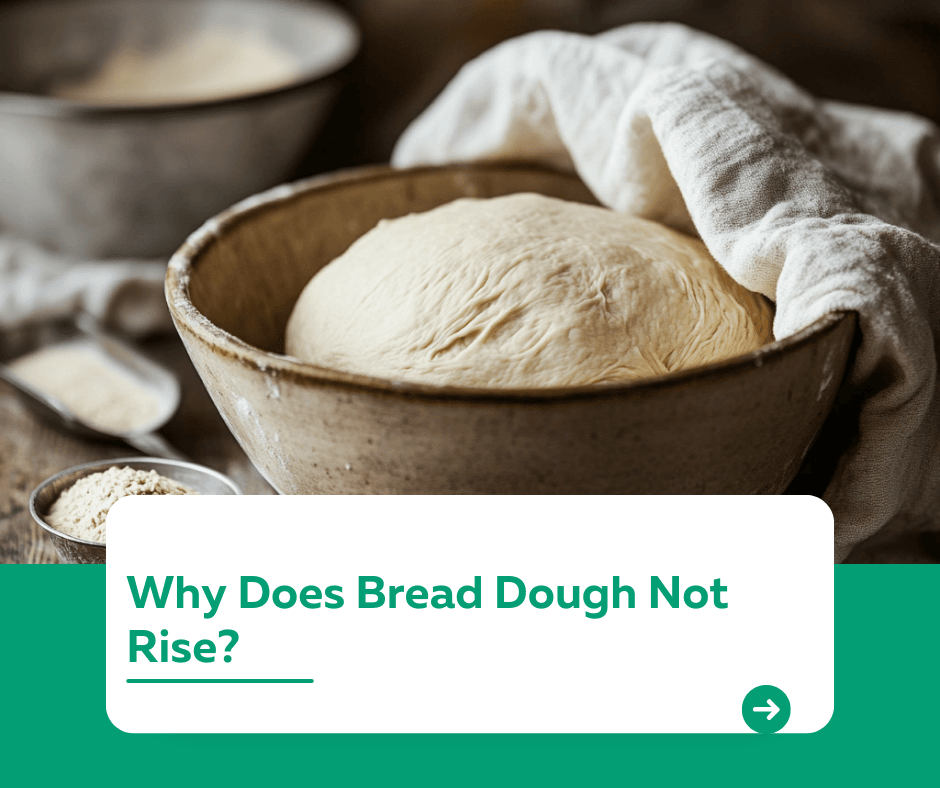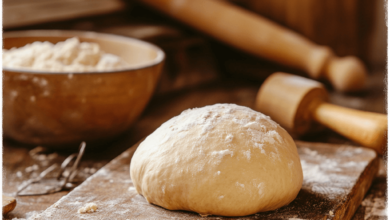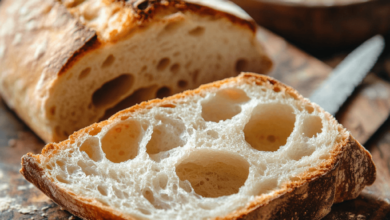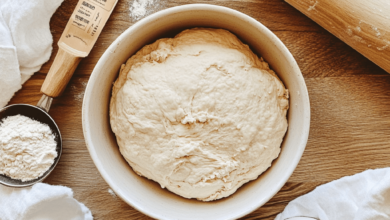Why Does Bread Dough Not Rise?

Introduction
“Why does bread dough not rise?”
There’s nothing more frustrating for a baker than dough that refuses to rise. Whether you’re making your first loaf of bread or a seasoned baker troubleshooting a bad batch, understanding why your bread dough isn’t rising is key. In this article, we’ll explore common reasons for dough failures and how to fix them so you can enjoy perfect, fluffy bread every time.
1. The Yeast Isn’t Active
Yeast is the driving force behind dough rising. If it’s not active, your bread won’t rise.
- Check Expiration Dates: Yeast past its expiration date may no longer be viable.
- Proof the Yeast: Dissolve yeast in warm water with a pinch of sugar to see if it foams (proofing). No foam? The yeast is dead.
Tip: Use water that’s warm but not hot—between 100°F and 110°F is ideal.
2. The Dough Is Too Cold
Yeast thrives in warmth. If your kitchen or dough is too cold, rising will slow or stop entirely.
- Solution:
- Place the dough in a warm, draft-free area to rise.
- Cover the bowl with a damp towel to retain heat and moisture.
Tip: An oven with the light on can create a warm environment for proofing.
3. The Dough Is Too Dry
Dry dough can limit yeast activity and elasticity, preventing proper rising.
- Solution:
- Ensure accurate measurement of flour and liquids.
- If the dough feels too dry, add a tablespoon of water at a time and knead until smooth.
4. Too Much Salt
Salt is necessary for flavor and structure, but too much can inhibit yeast.
- Solution:
- Stick to the recipe’s salt measurements.
- Ensure salt and yeast don’t directly touch before mixing into the dough.
5. The Dough Was Over-Kneaded or Under-Kneaded
Proper kneading develops gluten, which traps air and allows the dough to rise.
- Under-Kneaded Dough: Won’t have enough structure to hold gas.
- Over-Kneaded Dough: Can become too tight, limiting elasticity.
Solution: Knead the dough until it’s smooth and passes the windowpane test (stretch a small piece thin without breaking).
6. The Yeast Was Killed
High temperatures can kill yeast, rendering it inactive.
- Solution:
- Avoid using water or milk that’s too hot (over 120°F).
- Add yeast after liquids have cooled slightly, if necessary.
7. Overproofing or Underproofing
Dough needs the right amount of time to proof.
- Underproofed Dough: Won’t rise enough before baking.
- Overproofed Dough: Collapses, as the yeast has overexerted itself.
Solution: Follow proofing times in your recipe and monitor dough for signs of readiness (e.g., doubling in size).
Conclusion
Bread dough that doesn’t rise can often be saved if you identify the problem early. By checking your yeast, adjusting the environment, and ensuring proper kneading and proofing, you’ll be able to troubleshoot and bake with confidence. Don’t give up—practice makes perfect!
For more bread baking tips and troubleshooting guides, visit our Kuestion.com.




